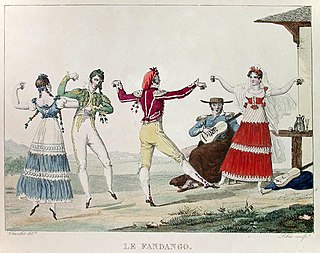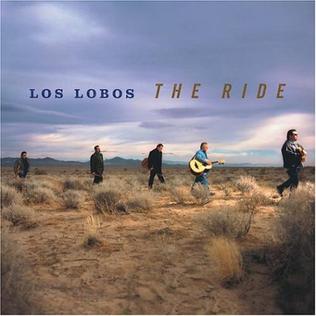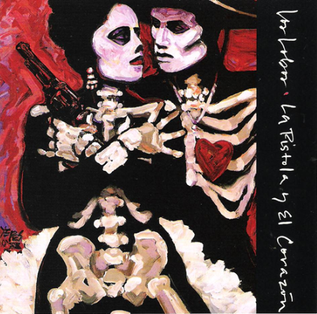
Los Lobos are an American rock band from East Los Angeles, California. Their music is influenced by rock and roll, Tex-Mex, country, zydeco, folk, R&B, blues, brown-eyed soul, and traditional music such as cumbia, boleros and norteños. The band rose to international stardom in 1987, when their version of Ritchie Valens' "La Bamba" peaked at the top of the Billboard Hot 100, and also topped the charts in the United Kingdom, and several other countries. Songs by Los Lobos have been recorded by Elvis Costello, Waylon Jennings, Frankie Yankovic, and Robert Plant. In 2015, they were nominated for induction into the Rock and Roll Hall of Fame. In 2018, they were inducted into the Austin City Limits Hall of Fame. They are also known for performing the theme song for Handy Manny.

The music of Mexico is very diverse and features a wide range of musical genres and performance styles. It has been influenced by a variety of cultures, most notably deriving from the culture of the Europeans, Indigenous, and Africans. It also sometimes rarely contains influences from Asians and Arabs, as well as from other Hispanic and Latino cultures. Music was an expression of Mexican nationalism, beginning in the nineteenth century.

Fandango is a lively partner dance originating in Portugal and Spain, usually in triple meter, traditionally accompanied by guitars, castanets, or hand-clapping. Fandango can both be sung and danced. Sung fandango is usually bipartite: it has an instrumental introduction followed by "variaciones". Sung fandango usually follows the structure of "cante" that consist of four or five octosyllabic verses (coplas) or musical phrases (tercios). Occasionally, the first copla is repeated.

Ozomatli is an American rock band, formed in 1995 in Los Angeles. They are known both for their vocal activist viewpoints and incorporating a wide array of musical styles – including salsa, jazz, funk, reggae, hip hop, and others. The group formed in 1995 and has since released seven studio albums. The group is also known for advocating for farm-workers' rights and immigration reform. The band has performed in various countries all over the world, including China, Tunisia, Jordan, Cuba, and Burma. Although the band has had many member changes over the years and has sometimes had as many as ten members, the current six members have been in the band since its debut album.

María Natalia Lafourcade Silva is a Mexican pop-rock, jazz and folk singer and songwriter who, since her debut in 2002, has been one of the most successful singers in Latin America. Lafourcade's voice has been categorized as a lyric soprano.

Regional styles of Mexican music vary greatly from state to state. Norteño, banda, duranguense, Son mexicano and other Mexican country music genres are often known as regional Mexican music because each state produces different musical sounds and lyrics.

The Ride is a studio album by Los Lobos. It was released on May 4, 2004, by Hollywood / Mammoth Records. It features numerous guest musicians, including Bobby Womack, Tom Waits, Rubén Blades, Dave Alvin, Richard Thompson, Elvis Costello, Mavis Staples, and Garth Hudson. The album contains new material and also new versions of earlier Los Lobos songs.

La Pistola y El Corazón is the fourth album by the Mexican American rock group Los Lobos, released in September 1988 on Slash/Warner Bros. Records. The mini-album is dedicated to Tejano/Mariachi folk music. It won a Grammy Award in 1989 for Best Mexican-American Performance.

Son jarocho is a regional folk musical style of Mexican Son from Veracruz, a Mexican state along the Gulf of Mexico. It evolved over the last two and a half centuries along the coastal portions of southern Tamaulipas state and Veracruz state, hence the term jarocho, a colloquial term for people or things from the port city of Veracruz.

Son huasteco is one of eight Mexican song styles and is a traditional Mexican musical style originating in the six state area of Northeastern Mexico called La Huasteca. It dates back to the end of the 19th century and is influenced by Spanish and indigenous cultures. Usually it is played by a Trio Huasteco composed of a guitarra quinta huapanguera a Jarana huasteca and a violin. Singers will often use the falsetto register. The son huasteco is particularly noteworthy for its flamboyant and virtuoso violin parts, although the style varies from state to state. Footwork often danced to son huasteco is the Zapateado. Improvisation plays a strong role in the style, with musicians creating their own lyrics and arrangements to a standard repertoire. Typical sones huastecos are "Cielito Lindo", "La huazanga", "La sirena", "El querreque" and "La cigarra".

Quetzal is a bilingual (Spanish-English) Chicano rock band from East Los Angeles, California.

The Town and the City is the twelfth studio album released by rock band Los Lobos in 2006, to generally positive critical reception. The title of the album is taken from the debut novel by Jack Kerouac. The album explores themes of longing, disillusionment, and loneliness in the Mexican-American immigration experience.

Los Lobos del Este de Los Angeles is the debut album by The American band Los Lobos, at the time known as Los Lobos del Este de Los Angeles. It was self-released by the band in early 1978 and features mostly traditional Mexican folk music. The album was recorded live to 16-track and represented the band's live repertoire at the time, which included their original song, "Flor de Huevo", an instrumental written by guitarist David Hidalgo. It was reissued on CD in 2000 by Hollywood Records with one bonus track.

Los Cenzontles is a Mexican-American group, cultural arts academy, and media production studio, that promotes Mexican roots music through research, performance, education, musical recordings and videos. They are based in the working-class city of San Pablo, California where they form the core of Los Cenzontles Cultural Arts Academy, where the members of the group were trained. Los Cenzontles have revived and promoted little known styles of Mexican regional music since 1989. The group has collaborated with numerous artists that include David Hidalgo, Linda Ronstadt, Los Lobos, Ry Cooder, Taj Mahal, Jackson Browne, The Chieftains and Flaco Jimenez, among others. Los Cenzontles has produced 30 tradition-based and cross cultural albums, 4 documentaries, and hundreds of video shorts available on their YouTube channel.

Sí Se Puede! is a 1977 various artists charity album featuring Los Lobos and various vocalists, including the Salas Brothers of the band Tierra. Proceeds from the album went towards the United Farm Workers of America. "Sí, se puede" is the motto of the United Farm Workers of America.
Son de Madera is a son jarocho band based in Veracruz, Mexico. Its core members are Ramón Gutiérrez Hernández, Tereso Vega, and Rubí Oseguera Rueda. The band was founded in 1992 by Ramón Gutiérrez and Laura Rebolloso.

Son mexicano is a style of Mexican folk music and dance that encompasses various regional genres, all of which are called son. The term son literally means "sound" in Spanish, and is also applied to other unrelated genres, most notably son cubano.
Las Cafeteras is a Chicano band from East Los Angeles, California. Their music fuses spoken word and folk music, with traditional Son jarocho and zapateado dancing.

Papa's Dream is a children's album by Los Lobos with Lalo Guerrero, released in 1995 through Music for Little People/Warner Bros. It features, among others, the Children's Coro of Los Cenzontles Musical Arts Center of San Pablo, California.

Los Lobos Goes Disney is a covers album by the Mexican American rock group Los Lobos, on which the band interprets songs from the Disney catalogue, most of which were featured in their animated films. It was released on 27 October 2009 through Disney Sound.
















